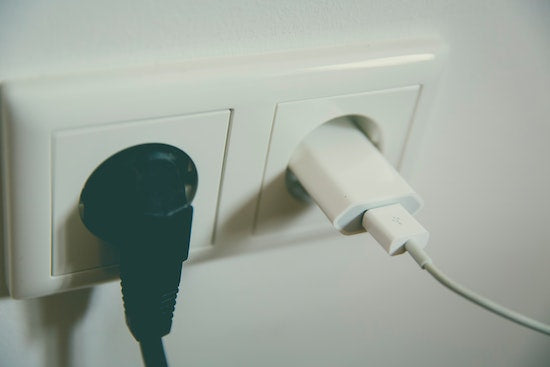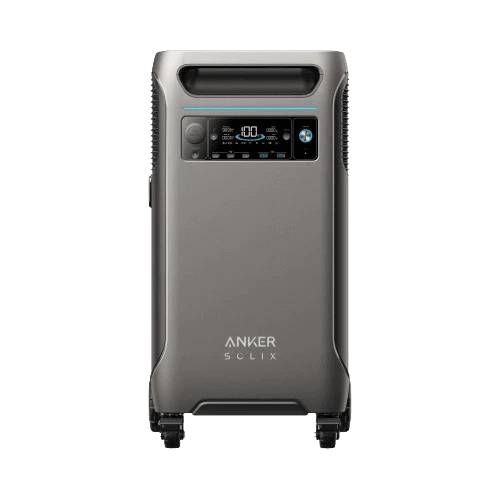In today's digital age, where we rely heavily on electronic devices and appliances, having a reliable and stable power source is essential. This is where pure sine wave inverter, also known as true sine wave inverter, comes into play. They are advanced power conversion devices that produce a high-quality AC power output, mimicking the smooth and consistent waveform of utility company power. In this blog post, we will explore the fundamentals of pure sine wave inverters, including what they are, how they work, the differences between modified and pure sine wave inverters, and when you need a pure sine wave inverter. So, let's dive in and discover all you need to know about pure sine wave inverters.

What is a Pure Sine Wave Inverter?
A pure sine wave inverter is a type of power inverter that converts DC (direct current) power from batteries or other DC sources into AC power that can be used to power a wide range of electronic devices and appliances, including sensitive equipment such as laptops, refrigerators, air conditioners, and more.
DC (direct current) power is the type of electricity that flows in only one direction, with a constant voltage level. It is typically generated by sources such as batteries, solar panels, or DC power supplies. In DC power, the electric charge flows in a single direction, maintaining a constant polarity.
AC (alternating current) power, on the other hand, is the type of electricity that reverses its direction periodically, resulting in a changing voltage and current flow. AC power is the type of electricity that is commonly supplied by utility companies and used to power most household appliances and electronic devices.
The sine wave power inverter produces an AC (alternating current) output waveform that is virtually identical to the clean and smooth sine wave produced by utility companies. The output waveform of a pure sine wave inverter is a smooth curve that replicates the natural waveform of utility company power, resulting in a stable and clean power supply that is ideal for powering sensitive electronics without causing any interference or damage. Pure sine wave inverters are known for their high-quality and reliable power output, making them the preferred choice for a wide range of applications, including homes, RVs, boats, solar power systems, and more.

How Does a Pure Sine Wave Inverter Work?
Here are the step-by-step processes involved in how a pure sine wave inverter works:
DC Power Input: The pure sine wave inverter is connected to a DC power source, such as a battery or a DC power supply.
Pulse Width Modulation (PWM): The DC power is converted into a high-frequency AC signal using Pulse Width Modulation (PWM). In this process, the DC power is rapidly switched on and off at a high frequency, typically tens of thousands of times per second, to create a square wave AC signal.
Filter Stage: The square wave AC signal is then passed through a filter stage, which smoothens the signal and removes the high-frequency components, resulting in a closer approximation of a sine wave.
Voltage Regulation: The filtered AC signal is then fed into a voltage regulation stage, where the output voltage is adjusted to match the desired AC output voltage, typically 120V or 230V, depending on the region and application.
Sine Wave Generation: The adjusted AC signal is then processed through a sine wave generation stage, which uses complex algorithms and techniques to convert the square wave or modified sine wave into a pure sine wave. This process involves shaping the waveform to replicate the smooth curve of a natural sine wave.
Output Stage: Finally, the pure sine wave output is amplified to the required power level and sent to the AC outlets of the inverter, where it can be used to power a wide range of electronic devices and appliances, just like utility company power.
Additional Features: Many pure sine wave inverters also come with additional features, such as surge protection, over-voltage protection, short-circuit protection, and more, to ensure safe and reliable operation of connected devices.
Overall, a pure sine wave inverter provides a high-quality and stable AC power output, making it suitable for powering sensitive electronic devices and appliances that require a clean and consistent power source.
Modified vs. Pure Sine Wave Inverters – Where is the Difference?
Modified sine wave inverters and pure sine wave inverters are two types of power inverters. The main difference between them lies in the quality and characteristics of the AC waveform they produce.
Waveform: A pure sine wave inverter generates a waveform that is comparable to the smooth, regular waveform that seems to be a perfect sine wave that is delivered by the utility grid. A modified sine wave inverter, on the other hand, generates an AC waveform that is not as smooth and constant but rather stepped or blocky with sharp variations in voltage levels.
Compatibility: Wider variety of electronic products, including delicate equipment like medical devices, refrigerators, air conditioners, and some types of motors, are thought to work better with pure sine wave inverters than with other types of inverters. This is because pure sine wave inverters assist to avoid possible problems like electrical noise, overheating, and damage to delicate components. These devices are made to operate with a smooth and continuous sine wave. Modified sine wave inverters, on the other hand, might not be appropriate for all kinds of electronic equipment since the stepped waveform can make some of them make buzzing or humming noises, work less effectively, or even stop working altogether.
Cost: Since modified sine wave inverters are easier to develop and produce, they are often less expensive than pure sine wave inverters. Since they are less sensitive to the quality of the AC waveform, they are a more affordable solution for basic power requirements like powering basic devices or appliances. On the other hand, pure sine wave inverters are often more expensive as a result of their advanced technology and capacity to generate a higher-quality AC waveform.
Efficiency: Pure sine wave inverters are known to be more efficient in converting DC power to AC power compared to modified sine wave inverters. This is because the stepped waveform produced by modified sine wave inverters requires additional filtering and processing by some devices, which can result in higher power consumption and reduced efficiency. In contrast, the smooth and consistent waveform produced by pure sine wave inverters requires less filtering and processing, resulting in higher overall efficiency.
In summary, pure sine wave inverters are generally considered to be more suitable for powering sensitive electronic devices and appliances, while modified sine wave inverters may be a more cost-effective option for basic power needs.

When Do You Need a Pure Sine Wave Inverter?
A pure sine wave inverter is needed when you require high-quality, stable power for sensitive electronics or appliances. It is necessary in situations where clean and reliable power is essential to prevent any potential damage or malfunctions caused by irregular power waveforms. Some examples of when a pure sine wave inverter may be needed include:
Running sensitive electronics: If you have sensitive electronics such as laptops, desktop computers, gaming consoles, audio equipment, or medical devices that require a stable and clean power supply, a pure sine wave inverter generator is necessary. These devices are designed to work with a smooth sine wave and may experience issues or even damage if powered by a modified sine wave inverter or a generator without pure sine wave output.
Powering appliances with motors: Appliances such as refrigerators, air conditioners, power tools, and pumps often have motors that require a pure sine wave for proper operation. A pure sine wave inverter ensures that these appliances receive a stable and clean power supply, preventing potential damage or malfunction that may be caused by irregular power waveforms.
Operating audio and video equipment: Audio and video equipment, such as amplifiers, mixers, televisions, and projectors, may require a pure sine wave for optimal performance. Irregular power waveforms from a modified sine wave inverter or a generator without pure sine wave output can introduce noise or distortion, affecting the quality of audio and video output.
Powering recreational vehicles (RVs): RVs often have sensitive electronics, appliances, and other devices that require clean and stable power, similar to what is available from a utility grid. A rv pure sine wave inverter is typically needed to power these devices, ensuring that they function properly and without any risk of damage or malfunction.
Medical equipment: Medical devices, such as CPAP machines, oxygen concentrators, and other life-saving equipment, often require a reliable and clean power source to operate safely and effectively. A pure sine wave inverter is essential to provide a stable and high-quality power supply for these devices, especially in situations where uninterrupted power supply is critical for patient care.
A pure sine wave inverter is necessary when you require high-quality, stable power for sensitive electronics, appliances with motors, audio and video equipment, recreational vehicles (RVs), and medical equipment. It ensures that these devices receive clean and reliable power, preventing potential damage or malfunctions caused by irregular power waveforms.
Conclusion
In conclusion, a pure sine wave inverter is a crucial component for reliable power conversion, especially for sensitive electronics. It provides clean and stable power output, ensuring optimal performance and longevity of your devices. When choosing a pure sine wave inverter, consider the Anker 757 PowerHouse for its advanced features and versatility. Invest in a high-quality pure sine wave inverter to protect your valuable electronics and enjoy uninterrupted power supply wherever you go.
FAQ about Pure Sine Wave Inverter
Is it Worth Getting a Pure Sine Wave Inverter?
Yes. A pure sine wave inverter is indeed worth it and a necessity, especially in homes or line of work that utilizes devices or power outlet that has a direct current waveform.
Does a Fridge Need Pure Sine Wave?
The question of whether a fridge needs a pure sine wave inverter or not depends on the brand and model of the refrigerator, but an inverter is needed if the fridge is using a direct current.
Can Inverter Damage Electronics?
In some cases, yes, an inverter can potentially damage electronics if not used correctly. For example, if the inverter produces a modified sine wave instead of a pure sine wave, it can cause issues with certain sensitive electronics that require a pure sine wave for proper operation. Additionally, if the inverter is not properly sized or lacks necessary safety features such as surge protection, over-voltage protection, or short-circuit protection, it may pose a risk of damaging connected electronics. It's important to carefully select and use an appropriate inverter to ensure safe and reliable operation of electronics.
Be the First to Know






